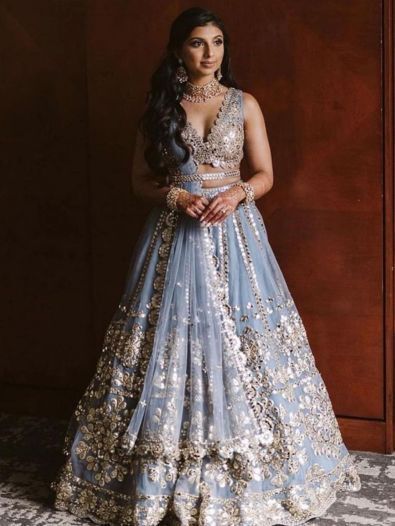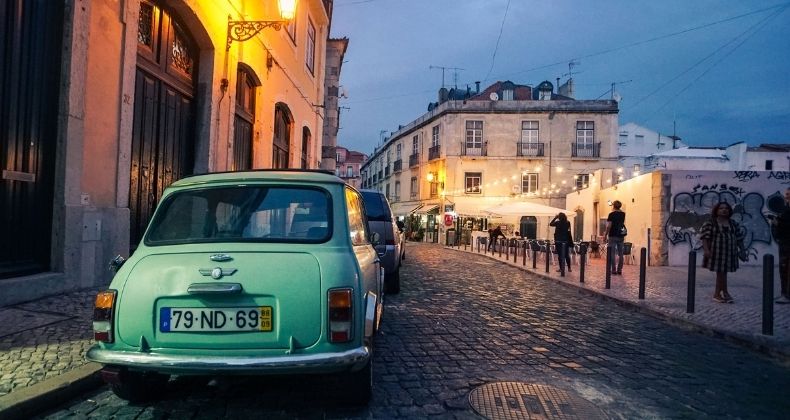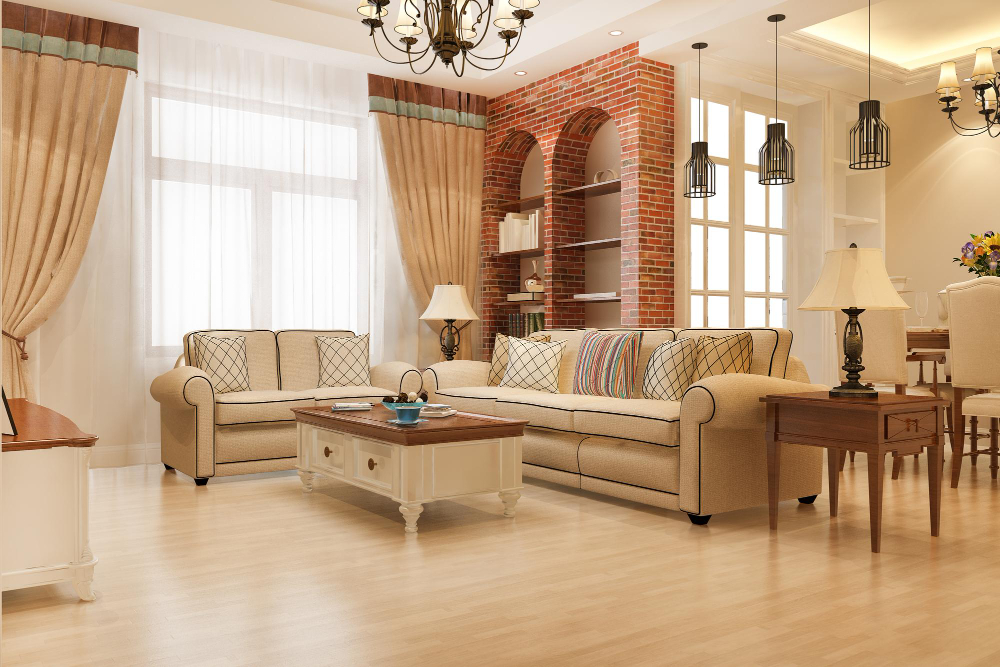When designing a baby pink lehenga for traditional wear, several key elements should be considered to ensure the garment reflects the cultural essence while also meeting modern style expectations. Here are some key elements to consider:
Silhouette:
The silhouette of the choli should complement the wearer’s body shape while adhering to traditional aesthetics. Traditional cholis are often fitted and cropped, but the exact length and fit can vary based on regional preferences and current fashion trends.
Fabric:
Choose fabrics that are commonly associated with traditional wear, such as silk, brocade, chiffon, or velvet. The fabric should be of good quality and comfortable to wear for long durations, especially for occasions like weddings or festivals.
- Silk: Silk is a classic choice for traditional cholis due to its luxurious texture and rich appearance. It drapes beautifully and can be embellished with embroidery or other decorative elements.
- Brocade: Brocade fabrics feature intricate woven patterns and metallic threads, making them ideal for adding a touch of opulence to a choli design. They are often used for special occasions like weddings and festivals.
- Velvet: Velvet adds a plush and luxurious feel to a choli, making it suitable for colder climates or evening events. It can be embellished with embroidery or beadwork for added glamour.
- Chiffon: Chiffon is a lightweight and sheer fabric that lends an ethereal and feminine look to a choli. It is often used for sleeves or overlays to add texture and movement to the design.
- Georgette: Georgette is similar to chiffon but slightly heavier, offering more opacity and structure. It drapes well and is commonly used for cholis with flowing silhouettes.
Embroidery and Embellishments:
Incorporate traditional embroidery techniques like zari, zardozi, resham, or mirror work to add richness and elegance to the choli. The choice of embellishments should complement the fabric and overall design.
- Zari Work: Zari, also known as metallic threadwork, involves using metallic threads like gold or silver to create intricate patterns and motifs on the fabric. It adds a touch of opulence and luxury to the choli design, making it perfect for special occasions like weddings and festivals.
- Zardozi: Zardozi is a traditional Indian embroidery technique that involves using gold or silver threads along with beads, sequins, and stones to create elaborate designs on the fabric. It creates a three-dimensional effect and adds a royal touch to the choli.
- Resham Embroidery: Resham embroidery, also known as silk thread embroidery, involves using colorful silk threads to create intricate designs on the fabric. It can be done in various stitches like satin stitch, chain stitch, and stem stitch to create floral motifs, paisleys, or geometric patterns.
Neckline and Sleeve Styles:
Pay attention to the neckline and sleeve styles, as they can greatly influence the overall look of the beige lehenga choli. Traditional necklines like sweetheart, square, or round necklines are popular choices, while sleeve styles can range from sleeveless to full sleeves with intricate detailing.
- Sweetheart Neckline: This neckline features a curved shape resembling the top of a heart. It is feminine and flattering, making it a popular choice for traditional cholis. It suits a variety of body types and can be paired with sleeves of different lengths for versatility.
- Square Neckline: A square neckline has straight edges that form a square shape at the front of the choli. It offers a classic and elegant look, making it suitable for both casual and formal occasions. It pairs well with cap sleeves or sleeveless styles.
- Round Neckline: A round neckline is a timeless choice for cholis, featuring a circular shape that frames the collarbone and neckline. It is versatile and can be customize with different embellishments or piping details to add interest to the design.
- High Neckline: A high neckline extends higher up on the neck, providing coverage and sophistication to the choli design. It is often adorn with intricate embroidery or embellishments to create a statement look.
Color Palette:
Traditional colors like red, maroon, gold, and royal blue are commonly use for traditional cholis, but designers can also experiment with contemporary color palettes while ensuring they align with cultural sensibilities.
- Traditional Colors: Traditional colors like red, maroon, gold, and royal blue are commonly associate with Indian cultural celebrations and ceremonies. These colors symbolize prosperity, happiness, and auspiciousness, making them popular choices for traditional cholis, especially for weddings and festivals.
- Regional Influences: Different regions in India have their own color preferences and symbolism. For example, brides in South India often wear cholis in vibrant hues like green, yellow, or pink, while brides in North India may prefer richer tones like red or crimson. Consider incorporating regional color influences to reflect cultural authenticity and diversity.
- Personal Preferences: Take into account the wearer’s personal preferences and skin tone when selecting colors for the choli. Certain colors may complement specific skin tones better than others, enhancing the wearer’s natural beauty and radiance. Consult with the client or wearer to understand their color preferences and any cultural or symbolic significance they may attach to specific colors.
Comfort and Fit:
Ensure that the choli fits well and allows for ease of movement, especially if it’s intend for festive occasions where dancing and other activities are common. Consider incorporating elements like stretch fabrics or adjustable closures for a comfortable fit.
Versatility:
Design the choli in a way that allows it to be style with different types of traditional bottoms like sarees, lehengas, or skirts. Versatility in styling ensures that the choli can be ware for various occasions and pair with different ensembles.
- Neutral Color Palette: Opt for a neutral color palette or timeless shades that can easily be pair with different sarees, lehengas, or skirts. Colors like black, white, ivory, or navy serve as versatile base colors that can complement a wide range of outfits.
- Classic Silhouette: Design the choli with a classic silhouette that transcends trends and remains relevant over time. A fitted bodice with clean lines and minimal embellishments provides a versatile canvas for accessorizing and styling.
- Removable Embellishments: Incorporate removable embellishments like detachable sleeves, collars, or statement accessories that can be add or remove base on the wearer’s preference or the occasion. This allows for customization and versatility in styling the choli for different looks.
Cultural Significance:
Respect cultural norms and traditions associated with the choli’s intended wearers. Pay attention to regional preferences, religious considerations, and any specific customs related to choli design and styling.
By considering these key elements, designers can create cholis that not only honor traditional aesthetics but also appeal to modern sensibilities, making them versatile pieces for various occasions. View More



